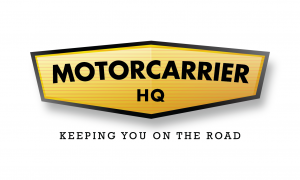September 11, 2022
What to Do if Your Trucking Business Has a Bad Month

No matter how well-oiled your trucking operation is, you’re bound to have a bad month here or there. Check out Haulin Assets’ monthly profit and loss statements as an example of the ups and downs even well-run trucking companies face. Whether these periodic slumps and setbacks are due to economic forces impacting the logistics world at large or simply a mechanical breakdown sidelining your truck for a week or two, bad months are an inevitable part of the trucking industry.
Unfortunately, while these challenges are expected, they are anything but predictable. That’s why it’s so important to prepare yourself and your business for setbacks ahead of time so that when trouble does eventually strike, your business can weather the storm without going under.
With demand high and the sheer volume of available jobs continues to increase as of late, it’s very possible — and even likely — that many new owner operators have yet to experience their first bad month. Here’s why it’s crucial to start thinking about and preparing for bad months now and tips for how to quickly rebound back into profitability.
What Causes “Bad Months?”
Though many of the recent industry challenges have stemmed from COVID-19, it’s not often that a worldwide pandemic scare disrupts the global supply chain. There are, however, several more common events and factors that can level your profits from time to time, such as:
- Low Rates
Freight rates will naturally ebb and flow according to seasonal demand. Occasionally, these rates dip low enough that independent owner operators are left to decide whether or not a job is even worth taking on at all. Spring 2020 marked one of those times and many businesses were hit hard. Chris’ trucking business, Haulin Assets, recorded its first financial loss thanks to limited job availability and poor rates.
- Limited Freight
Freight availability is also known to fluctuate and without an extensive network of established contacts, newer owner operators are very susceptible to dry spells. Building a reliable network is one of the most critical aspects of growing a small trucking business early on and it’s one of the best defenses against an economic downturn. Remember, when you’re known for reliable, on-time work, partners are much more likely to consider your business over others and see your work as worth the price, even when their budgets are slim.
- Unlucky Timing
Growing as a business requires making calculated moves at the right time. Things like adding a truck and a new driver to your operation can be a big step towards greater profits, or if the timing is wrong, it can drive up your costs significantly, something Chris learned when he added a new truck and driver just two weeks before COVID-19 caught the entire shipping industry by surprise. Even seasoned owner operators are vulnerable to unpredictable challenges and unlucky timing, which is why extensive preparation tends to be a common trait found among businesses that survive harsh turns of events.
- Change in Costs
There are a lot of expenses involved in running a trucking business. Not only are owner operators responsible for all licenses, fees, insurance, and taxes necessary to even put a truck on the road, but there are also fuel costs and compensations for any additional drivers to consider, both of which seem to be trending upwards. If you’re operating on a tight budget as-is, even a slight increase in fuel-per-gallon could have you operating at a loss if you aren’t careful.
Those following Chris Vernon’s journey from new owner operator to a small business operating five trucks over the past three years may recognize some of these examples. We explore all of them in greater detail in the Haulin’ Assets’ April 2020 Episode.
Preparing For Your First Bad Month
Trouble strikes when you least expect it, which is why every owner operator needs to have a solid contingency plan in place in order to keep trucks on the road and jobs coming in. That’s why much of the Motor Carrier HQ website is dedicated to cost-saving and financial preparedness resources to help new owner operators prepare and protect themselves against future hardships.
Whether or not you have a plan when that inevitable bad month or two comes around can ultimately make or break your business. Even though you never know when that rough stretch will come along, doing everything you can now to lessen the financial sting of a down month can go a long way toward protecting your business.
One simple thing you can do now to guard against future financial troubles is to pay down your debts when the money is good. In a recent podcast episode, Chris examined how working aggressively to eliminate debt after a big month can reap exponential benefits in the long term. By paying off debts, organizing their cash flow, and prioritizing preventative maintenance to keep expensive equipment operational and safe, owner operators can safeguard themselves against months of financial hardship.
Owning a small trucking business also requires some measure of industry awareness. If drivers fail to plan around industry trends, they may find themselves surprised at the end of the month when their finances reflect a net loss. Keep a close eye on trends that impact your specific region so sudden shifts in job availability or rates don’t catch you off-guard.
Rebound From a Bad Month with Efficient Business Practices
Down months happen, but they won’t crater your business if you’re in the habit of exploring new ways to operate efficiently. We’ve previously touched on topics like minimizing fuel costs with smarter driving and using cost-per-mile as a key metric to gauge a job’s impact on your bottom line, both of which can provide a major boost back to profitability after a slow period.
Owner operators can also pay closer attention to their unnecessary operational expenses, including:
- Excessive idling
- Poor vehicle aerodynamics
- Fuel cards with limited benefits and/or coverage
- Stopping for fuel as-needed rather than on a prepared, cost-saving route
Knowing your numbers is step one to improving your efficiency as an owner operator. Without detailed data on your rates, routes, miles run, deadhead miles, total revenue, rate-per-mile, and other monthly expenses, it’s nearly impossible to clearly identify strengths and weaknesses in your daily business operations. Tracking your cost-per-mile from month to month will quickly highlight areas that need changing in order for your business to rebound.
The Motor Carrier HQ team understands how challenging it can be to build a business from scratch. We have tons of helpful, compiled resources for new owner-operators to ensure your undertaking is given its best chance to succeed. Be sure to check out our list of free resources and our recent post on affording the jump to owner-operator.




